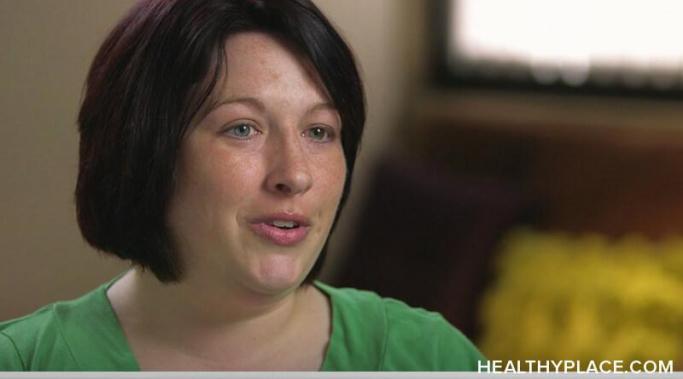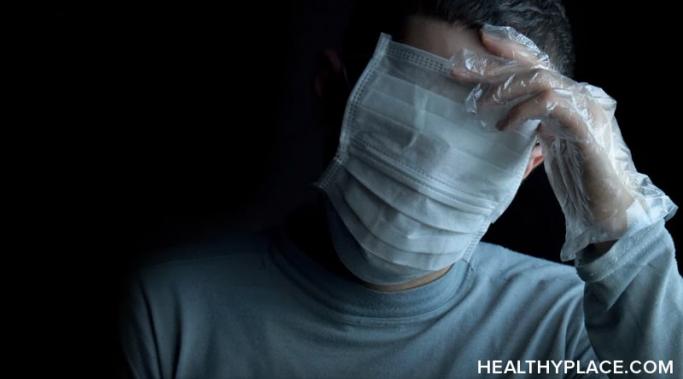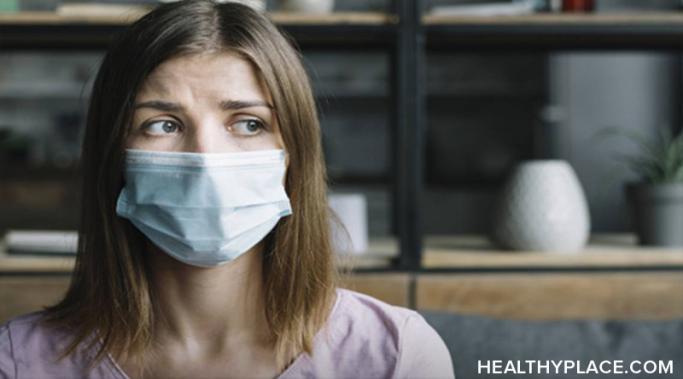Recently, I got my blood levels tested for a schizoaffective disorder medication I’m taking. My levels were slightly low. Let me tell you why it’s important that I get my blood levels tested regularly for this particular medication for my schizoaffective disorder.
Creative Schizophrenia
One thing I’ve learned about having schizoaffective disorder is how to use coping skills for my symptoms. Some of the skills I’ve developed myself and some I’ve learned in therapy. Here are some of the coping skills I’ve learned for the symptoms of my schizoaffective disorder. (Note: This post contains a trigger warning.)
One part of my treatment for schizoaffective disorder is an antianxiety medication I take as needed. I’ve been taking it for decades, but now my psychiatric nurse practitioner (NP) wants to ween me off of it. I have mixed feelings about this change in my schizoaffective treatment.
About 16 years ago, I was prescribed an antipsychotic for my schizoaffective disorder, and it triggered obsessive-compulsive disorder (OCD) symptoms. Here are some of the ways I acted with schizoaffective disorder and OCD.
My physical therapist, Marge, really surprised me by starting a conversation about mental health stigma on my last visit with her. I need to be in physical therapy because I’m recovering from double knee replacement surgery. Our conversations have revealed that she’s very anti-mental health stigma. Some people aren’t, so I just don’t discuss it with them. Physical therapy suddenly took on a whole new dimension.
Schizoaffective anxiety and recovering from surgery are a particularly bad combination. Yesterday, I was picking up some packages from the mail room. The mailroom is down a flight of stairs from our apartment. Only one package of four free COVID tests would fit in my tote bag, so I had to carry the other one by hand. I have a system for getting the mail on such occasions since I just had double knee surgery, and it’s hard for me to get up and down stairs. Schizoaffective anxiety in recovery makes it harder because I'm scared.
I just tested positive for COVID-19 on top of managing schizoaffective disorder and anxiety, and having just had the second of double knee replacements.
It's hard to believe that 14 months ago, I wrote my first blog for "Creative Schizophrenia." It seems like a month or two ago. That is the way with time as we get older, though. It slips away so quickly, almost as if it speeds up. After over a year of writing for this blog, it is time for me to move on and pursue other writing opportunities. This experience has been rewarding, and I don't take it for granted. I want to leave you with my hopes for all of you in 2024 and beyond.
Now, I have therapy skills for my schizoaffective disorder, but that wasn't true when I was younger. My first psychotic episode hit 25 years ago this holiday season, when I was a student at the Rhode Island School of Design (RISD). I was only 19 years old—terrified and somewhat unaware of what was happening. I’ve grown up a lot since then. You can grow and change while living with a mental illness. I know because I did, and my mental illness changed with me. What helped me and my schizoaffective disorder grow up, along with medication, are skills I learned in therapy. Here are some of the ones I found to be most helpful.
I deal with schizophrenia anxiety around COVID-19. The pandemic hit me especially hard. I still haven't recovered my former level of social activities, and much of my time is spent indoors and alone -- isolated. I still wear masks in the grocery store and don't dine indoors in restaurants (I live in a warm climate). When most of the world went on with their lives and returned to normal, my paranoia and anxiety kept me stuck in a loop of fear, worry, concern, and the possibility of adverse outcomes. Even though we took many precautions against contracting the virus, my husband returned to work over a year ago, and last week, he started having symptoms. Two days later, I did, too. After a few days, we both tested positive for COVID-19.









